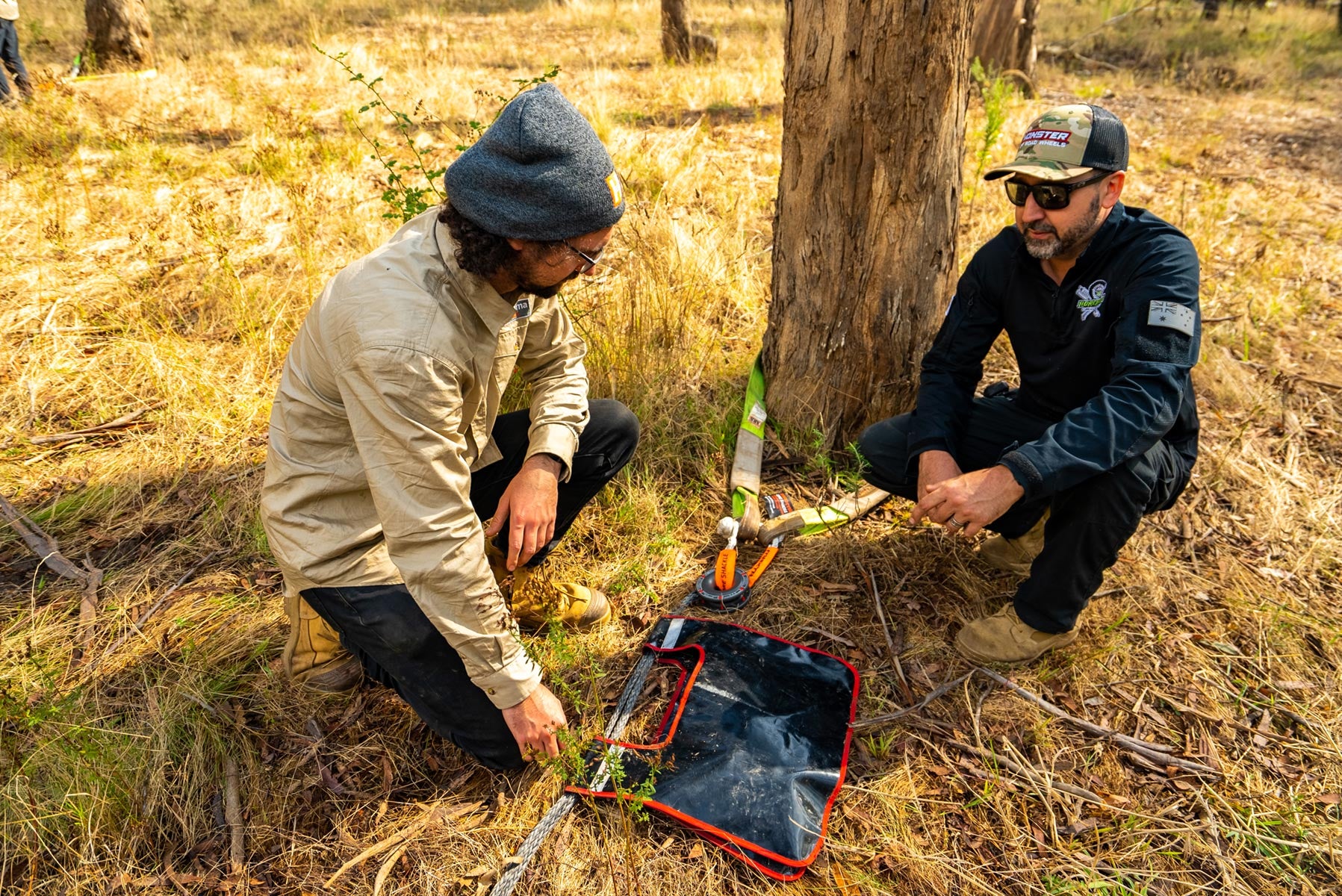:
What you need to know about 4WD recovery points
Words Ian Bellert
Recovery points on a vehicle are possibly the most critical piece of equipment when it comes to recovery. These points are placed under immense pressure under winching, snatching or extracting another vehicle. Therefore ‘rated’ components (recovery point, shackles and snatch straps) need to be installed and used in every vehicle recovery.
What does rated mean?
‘Rated’ means that the recovery points, the high tensile bolts (M14) used to affix the recovery point to the vehicle, and the components used in a recovery all need to have a load rating. This is stamped on the metal components and is listed on soft shackles and snatch straps. Seek components from reputable 4X4 accessory retailers. And don’t skimp — they must be stamped with their particular rating. Make sure recovery points have been gusset welded or aftermarket bolted onto the chassis of the vehicle and ask your 4X4 accessory retailer about which load rating is suitable for your vehicle.

Where to fit recovery points on a 4WD?
Recovery positions should be bolted directly onto the vehicle's chassis, which provides maximum strength. Generally, one at the front and one at the rear of the vehicle is minimum. A single rated recovery point on the front of the vehicle is adequate, although you need to be aware of the direction your vehicle will move under recovery forces. It is preferable to have two points on the front and rear to help disperse the forces in a recovery.
The rear of the vehicle can have options as a recovery point. If you have a towbar, then that’s the spot to house a hitch receiver recovery point. This slots into your towbar hole (remove the towbar tongue) and has a dedicated place to affix your shackle. Never use a towbar ball as a point to recover from. Never. It’s not rated for the dynamic forces used in a recovery and can lead to epic failure and a deadly projectile.
Aftermarket manufacturers have rear bar options which generally include two recovery points. Always use both points in a recovery, either front or rear if you have them fitted. This is done using an equalisation strap.
What’s an equalisation strap?
An equalisation strap, either a specific webbed strap or plasma or Dyneema-style rope, equalises the force of the recovery across the two recovery points, reducing the impact of a snatch recovery or when using a winch. An equalisation strap is a specific piece of equipment. Tree trunk protectors or snatch straps are not rated the same way as an equalisation strap.
Recovery mode
When you are in a recovery situation, take the following steps.
- Take your time to assess the recovery.
- Check for angles and any obstacles which may hinder the recovery or damage components.
- Always use a dampener on the snatch strap or winch cable.
- Recovery of a vehicle is not a spectator sport so get everyone well away from the recovery. Once you are ready, communicate with the driver and the extractor. Make communications clear prior to the recovery.
- Winching works with a little throttle input once the recovery is taking place. Snatching as well, so coordinate the use of the vehicle’s throttle helps in the extraction.
- Don’t use reverse gear when you’re extracting someone. It’s an easy way to rip teeth off your gearing as it's not designed for recovery loads.

Don’t ever
Don’t ever use the towball or the factory tie-down points on a vehicle for recovery purposes. It's a recipe for disaster as when they fail, they tend to fail big time. The forces at play in a recovery are insane so don’t mess with it. Bullbars are not designed for recovering vehicles and there are hundreds of YouTube videos showing bullbar bars coming off the vehicle.
Preparation for the inevitable
One last piece of advice is to get some training from a reputable 4WD training organisation or seek out your local 4WD club who are always willing to teach safe practices. At the very least practise in non-critical situations so you get familiar with your recovery gear, how your vehicle reacts under load and the driver is familiar with their part in the recovery. A couple of practice extractions really help when things go awry on the track.
Hema-tested recovery gear
To check out the recovery gear that the Hema Map Patrol tested out during a mapping expedition of the Victorian High Country back in 2023, as pictured throughout this article, head to A247:
- Factor 55 UltraHook (winch hook)
- Factor 55 Rope Retention Pulley (recovery ring)
- Factor 55 ProLink (winch shackle mount)
- MAXTRAX Core Shackle
- MAXTRAX Fuse Shackle
- Saber Winch Dampener

Next steps
At Hema Maps, we strive to provide the most comprehensive and accurate maps and guides for outdoor enthusiasts looking to explore Australia's natural wonders.
Did you find this information useful? If so, please share it with your fellow explorers. Whether it's by sms, social media, or email, your friends and fellow adventurers will appreciate the valuable tips and insights we've shared.
1 comment









Regarding your comment “Bullbars are not designed for recovering vehicles”. I don’t think that’s universally true. I have a TJM bullbar on my LC79, with integrated winch and two recovery points, rated to be used with an 8,000 kg equaliser strap